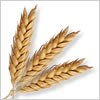Your cart
 Australia: Farmers to increase barley sowings this year
Australia: Farmers to increase barley sowings this year
During the current planting season, Australian farmers are planning to plant the same area of wheat as last year, while increasing barley sowings and reducing canola sowings. Low wheat prices are making barley more attractive, while dry conditions are making canola less viable, analysts forecast, UkrAgroConsult reported on May 29.
There has been heavy rainfall in the east of the country, but a lack of soil moisture in the states of South Australia, Victoria and parts of Western Australia is worsening the crop prospects.
In the 2025/2026 season (October-September), Australia will produce 30.3 million tonnes of wheat, which is 3.8 million tonnes below the current season, but above the 10-year average of 27.6 million tonnes, according to the consensus forecast of analysts and traders.
Australia is the world’s fourth-largest wheat exporter, shipping feed barley to China, Japan, Saudi Arabia and other countries.
Demand for Australian canola in China could rise next season as Beijing is locked in a trade dispute with Canada, its traditional supplier of the oilseed.
Australian farmers are currently sowing winter crops, with sowing finishing in July and harvesting scheduled for October-December.
The median estimate for Australian wheat area is unchanged from last year. Barley area is expected to expand by 2% and canola by 5%, although some forecasts suggest much larger moves for both crops.
Some analysts have also said pulse area (lentils and chickpeas) could increase by 20% after they have delivered bumper returns in recent seasons.
High fertiliser costs and wheat prices near five-year lows are discouraging farmers from growing wheat, while expectations of strong feed demand are making barley more attractive to farmers, said Rabobank analyst Vitor Pistoia.
Australia is used to dry planting seasons, with many farmers going ahead with their planting plans regardless, planting in dry soil and hoping for rain. However, some are still reacting to the weather.
“When it’s dry, farmers are moving away from high-risk crops like canola and planting more wheat or barley,” said Stefan Meyer, head of trading at brokerage StoneX.
The states that have suffered the most from the rainfall deficit, South Australia and Victoria, are not Australia’s biggest grain-producing regions, said Ole Houe, director of advisory services at IKON Commodities. “Even if there is no rain in those two states, the wheat crop will be 28-29 million tonnes,” he said.
Australia’s Bureau of Meteorology had previously forecast average to above-average rainfall between June and August in most grain-growing regions, with the exception of parts of Victoria and Western Australia.
Zurück
E-malt.com, the global information source for the brewing and malting industry professionals. The bi-weekly E-malt.com Newsletters feature latest industry news, statistics in graphs and tables, world barley and malt prices, and other relevant information. Click here to get full access to E-malt.com. If you are a Castle Malting client, you can get free access to E-malt.com website and publications. Contact us for more information at marketing@castlemalting.com .






